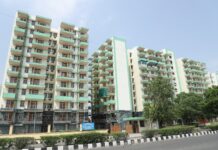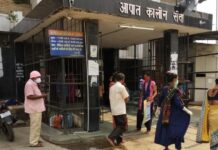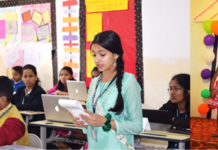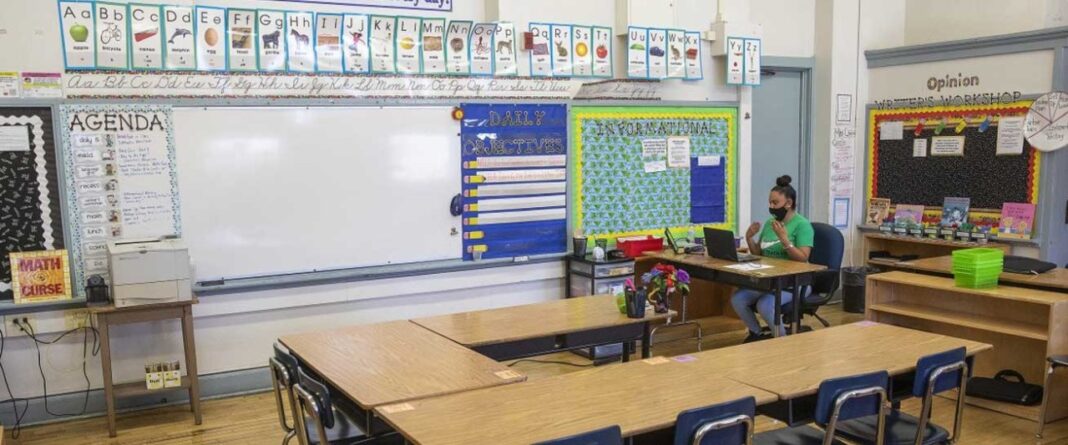A seamless education! Well, it is indeed the need of the hour for every student in India even though there is a huge population that does not understand higher floors more expensive system in education in the hierarchal order. Added to this is the impact of Covid-19 which is visible around the world where most, or to be precise, 90 percent of the global student population is affected by the pandemic in some way or the other.
The overall number can’t be seen under the social umbrella as a drop rate of 90 to 67 percent does not augur well for the future of the world. A UNESCO report suggests that more than 14 crore students from primary and 13 crore in higher secondary education are affected in India besides seven crore for higher education.
A student from the National Capital Region (NRC) of Delhi studying in a renowned school feels awkward sitting for the newly-designed online programme. She says all her hopes and aspirations of making it big in life dashed to smithereens, but there is nothing she could do with the new concept of social distancing. What a pity to have a population as huge as 14 crore has lost place in society due to lack of a social umbrella!
A mathematics teacher from a relatively small town in the densely populated eastern belt of Uttar Pradesh says management of his school blames high bandwidth in remote areas for the inferior quality of the class. A state with a highly undermined educational budget will ill afford the investment of crores in private schools. While radio services have been hired for most such remote regions, there is no mechanism to ensure that classes are conducted by government teachers. The question arises as to who are the beneficiaries. Can every small-town child have the facility to attend such a radio show?
Countries with strictly centralised administration like China or North Korea have no problem in enforcing the diktats of their supreme leader through any system in toto. But even a huge democracy like the US finds it hard to implement legislation enacted with a majority in parliament. An overseas life study suggests that there are a large number of developed nations where underpaid parents can’t afford broadband networks for their wards.
Then there is a nation like ours where a relatively very low-cost network suffers from underdeveloped infrastructure. Of course, keeping an eye on the children is also a social concern for parents in our society. There is a huge population living in mid-size urban towns blaming the government for being ill-prepared to handle such an unprecedented situation in the wake of the pandemic.
But who is really to blame for the mess? A relatively predictable question that needs an answer, but who will answer!
A significant number of students are not yet ready to be promoted by schools, says a psychiatrist. Why? This is a question for the society as well as the stakeholders involved. Teachers are not sure about the methodologies to be employed in online education. Online classes, on the one hand, face huge discipline issues specifically because young children are involved; the monologue mode of radio or even loudspeaker ends up in lack of education delivery, on the other.
Parents have to constantly sit with young kids through the class to ensure concentration of their wards.
“I can’t do anything else during the class,” bemoans Samhita, mother of a six-year-old.
It’s a huge disadvantage for the parents rendered jobless in the wake of the coronavirus outbreak. But then parents seem to be on the downside of the school trade. Even a six-year-old girl, who is otherwise privileged as a single girl child, finds it difficult to manage her studies in times of the pandemic.
Managing classroom paraphernalia with just a cell phone goes unappreciated by the Ministry of Electronics and Information Technology. In September 2020, the ministry suggested that specific absorption ratios (SAR) by many manufacturers do not stand up to the radiation standards.
Though it’s difficult to blame anyone for the digital learning mess, the projected $8.26-billion market to cater to over 128 million internet users in the country by 2026, most of them, of course, are devices that go far from SAR that should be less than what is prescribed by the ministry. According to Minister of Information Technology Ravi Shankar Prasad, there are around 70 crore plus smartphone users along with other smart devices that can be used to access the internet with underlying issues. A young child using such devices is not only exposed to a probable higher SAR but to contents not suitable for their age.
A child who wanted to be a soldier, a child who wanted to be a scientist, an artist, a doctor or an engineer is not able to get what he or she should have got from his/her school. While there is a craze for high profile education system, students in rural areas are still awaiting radio signals.
A private school teacher from a rural area is waiting for salaries and a metropolitan parent is succumbing to the pressure for overtly smart classes. Teachers conducting such classes don’t know how to do it, neither the young ones who get everything unexplained or intellectually interrupted due to network issues.
The pandemic has also exposed huge gaps in the primary education system. For example, the most literate state of Kerala is not prepared to handle it on both the education and health front. India is now evolving and learning to make necessary changes in education delivery during such a pandemic. Society though has yet to manage itself with changes.
Disclaimer: We do undertake rigorous checks on content provided by contributors before publishing the same. If you come across some factual errors, kindly bring this into our notice and we shall review your objection and claim as per our policy and display correction credits and corrections on the article itself.
The opinion expressed in the article is of the writer. Writer is a freelance journalist/journalist based in Delhi





























